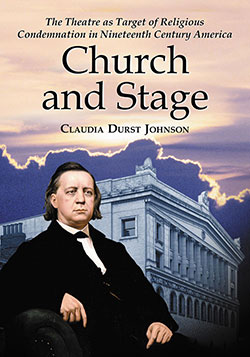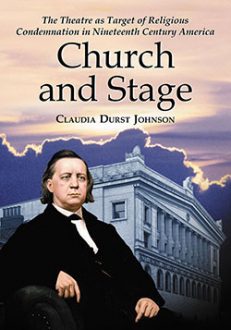Church and Stage
The Theatre as Target of Religious Condemnation in Nineteenth Century America
$39.95
In stock
About the Book
Throughout nineteenth century America, religious officials often condemned the theatre as an inversion of the house of God, similar to the church in architectural structure and organization but wholly different in purpose and values. This book explores the many ways in which religious institutions supported by capitalism profoundly affected the early development of American theatre. The author analyzes the church’s critical view toward common theatre practices, including the use of female and child performers, and the lower class alliance with the stage. Three appendices provide period correspondence, including an excerpt from Mark Twain’s February 1871 “Memoranda,” in which Twain criticizes an Episcopalian reverend for denying church burial to a popular stage comedian.
About the Author(s)
Bibliographic Details
Claudia Durst Johnson
Format: softcover (6 x 9)
Pages: 221
Bibliographic Info: 24 photos, appendices, notes, bibliography, index
Copyright Date: 2008
pISBN: 978-0-7864-3080-2
eISBN: 978-1-4766-0894-5
Imprint: McFarland
Table of Contents
Introduction—Church and Stage: The Two Temples 1
1. The English and Early American Beginnings 9
2. The Power and Values of the Church 28
3. Plays, Playgoers, and Actors 38
4. The Impact of Clerical Attacks on Actors and the Profession 49
5. The Church and the Actress 66
6. Trading Religious Approval for Work 77
7. Wearing the Pants, Making the Choices, Writing the Plays 92
8. Children in Industry: Children on Stage 103
9. Prostitutes and the Bar 120
10. Violence in the Audience, Irreverence on the Stage 135
11. The Winding Down of an Old War 159
Appendix 1: Cornelius Logan’s Defense of the Stage 175
Appendix 2: Cincinnati Daily Enquirer on the Third Tier 182
Appendix 3: Mark Twain on the Reverend Sabine 185
Chapter Notes 187
Bibliography 199
Index 213
Book Reviews & Awards
“first-rate research…a useful resource…highly recommended”—Choice.





